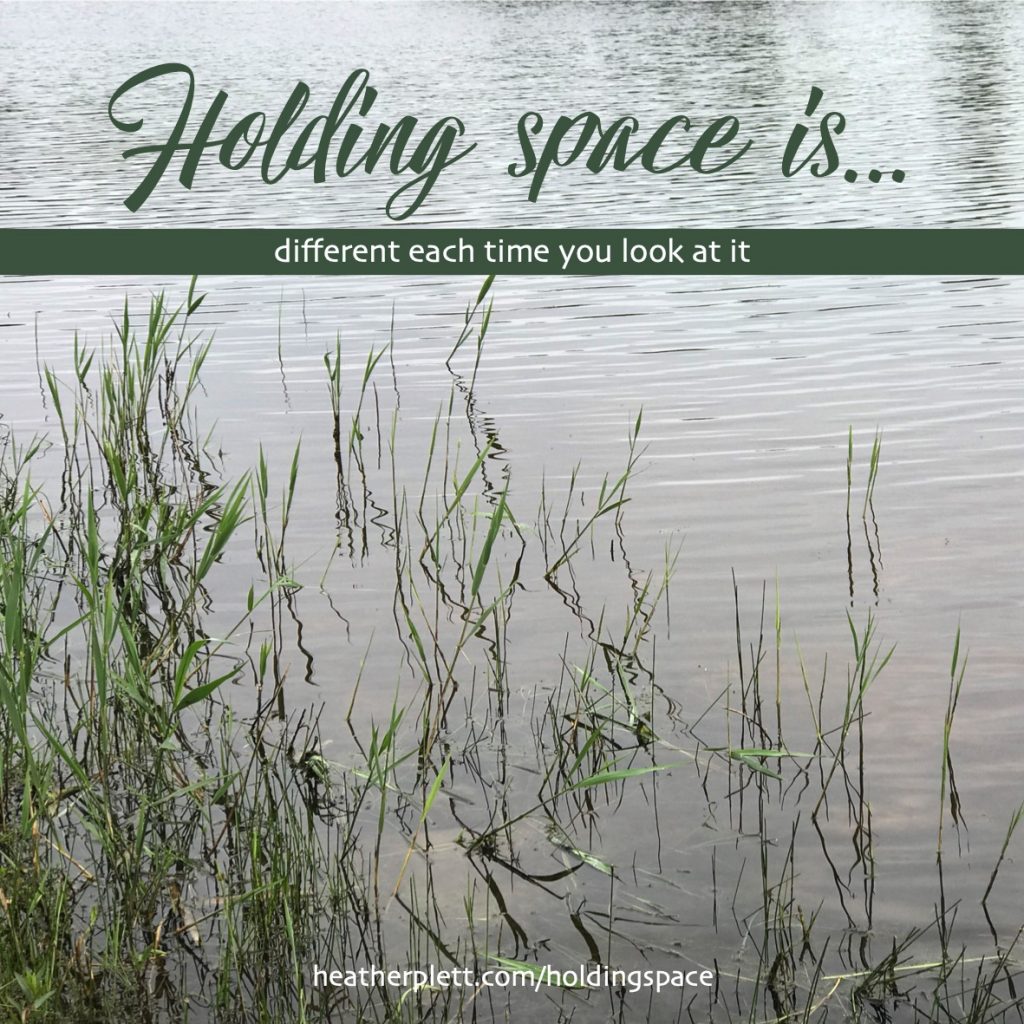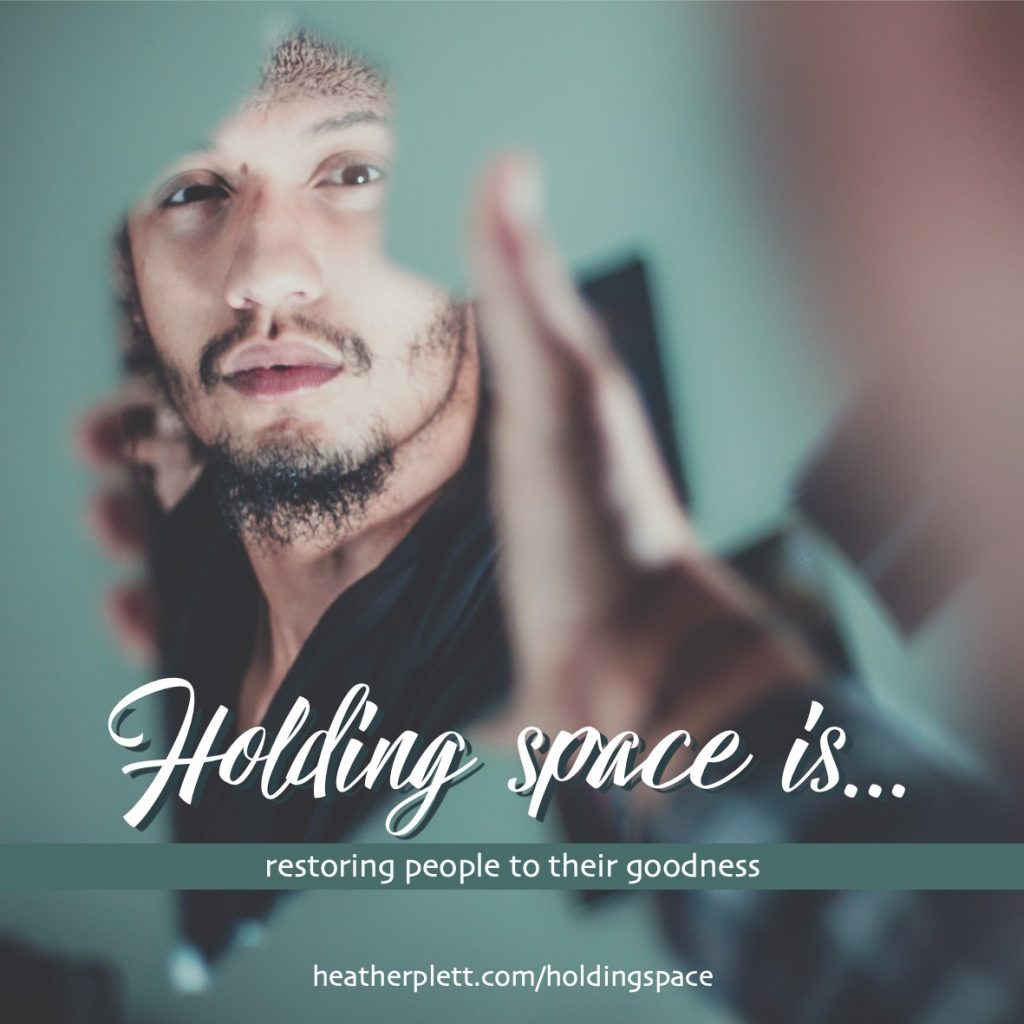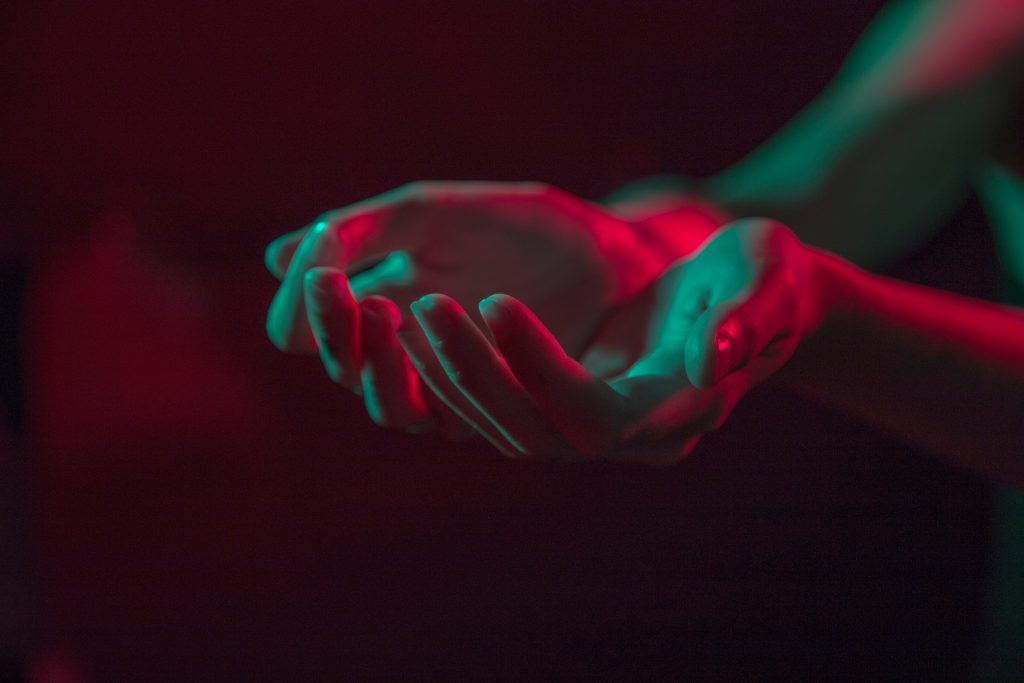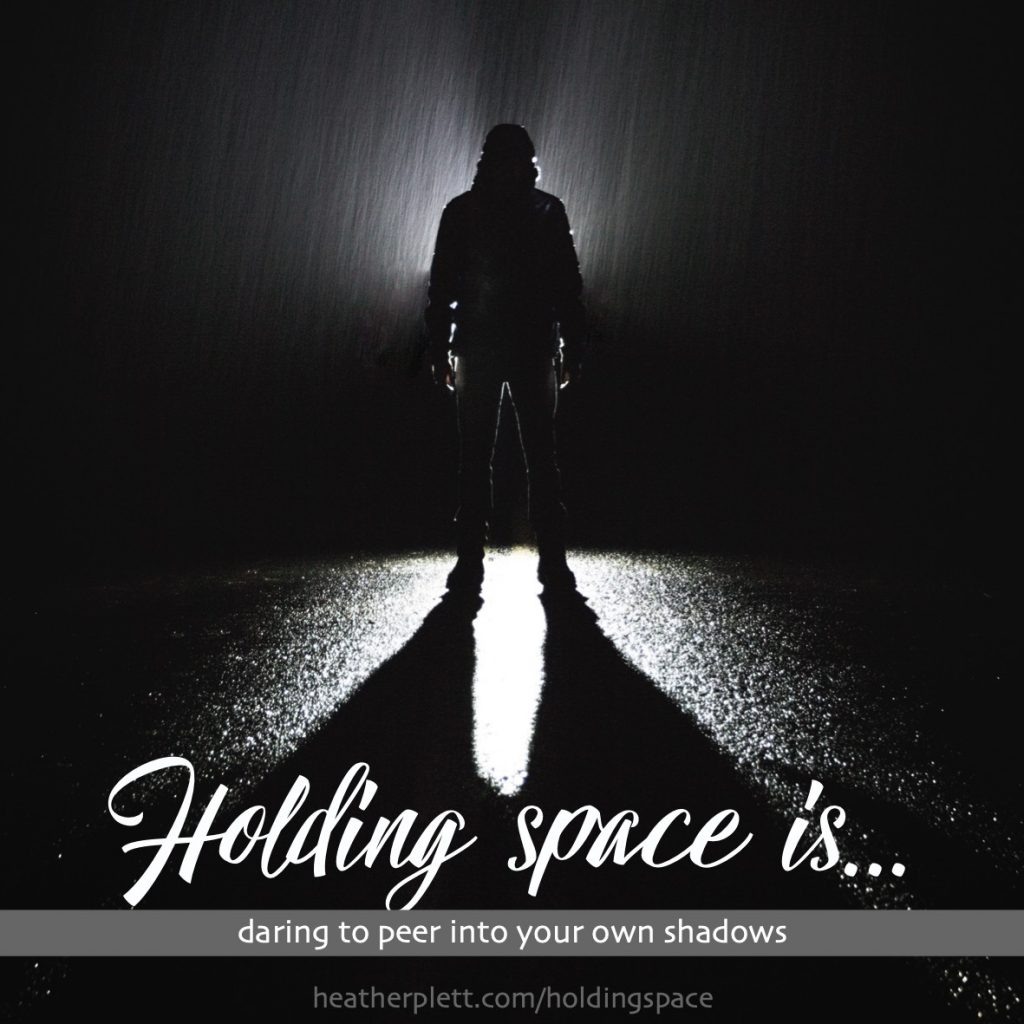How to hold space (some new tips, four years after the viral blog post)

In the long shadows of early morning, on a recent trip to the Netherlands, I stood at the edge of a pond watching the light and breeze play with the surface of the water. Near where I stood, tall, straight reeds were reflected on the rippling water. It occurred to me, as I stood there, that if I were only able to look at the reflections of those reeds and not see the reeds directly, then I would never know for certain what the reeds looked like. The reflections kept moving and wiggling and reshaping themselves on the ripples, never quite the same from one second to the next.
This, I believe, is what my relationship with the concept of holding space is like. Though I have been staring at it intently for several years, writing many posts and a great deal of course content, and traveling the world to teach it, I am still only looking at a reflection of it and trying to describe it from the place I stand, knowing that you may be on another shore looking at it from a different perspective.
The longer I stare at it, though, the more I learn about this beautiful reed and the more I find myself dancing along with the reflection, open to the flow of what comes with each breeze.
Here are some recent reflections about how to hold space, gathered after a few intense months of teaching, traveling, and holding space.
- Stay curious. When judgement creeps in, it’s difficult to hold space for someone (or ourselves) because we’re inclined to want to change them, criticize them, or impose our own expectations on them. Judgement and curiosity don’t coexist well, though, so in order to shift out of judging mind, bring in curiosity. Ask curious questions and listen with openness for the answers. When the other person recognizes that there is curiosity and openness in our questions rather than judgement, they’ll be better able to trust that we have their best interests at heart.
- Release attachment to outcome. I’ve said this phrase hundreds of times, at nearly every workshop, retreat, or online course I’ve ever taught, and yet it’s still one that I have to remind myself of on a daily basis. Clinging to a desired outcome – or even a believe that there WILL BE a positive outcome of some sort – is to bring in your own ego, your own desires, and your own expectations. To hold space is to open yourself up to the possibility that what comes (if anything DOES come) is outside of your control and may not be aligned with what you want. When you let go of outcome, you’ll be less inclined to label something as “failure” or “success” and simply accept it as what is. (Sure, there may be times when you’re working toward a specific outcome, but then you’re not really holding space.) As is taught in Open Space, “whatever happens is the only thing that could happen.”
- Let go of “perfect” and embrace “good enough”. Holding space is not something we can ever do with precision and perfection, because we’re dealing with humans (ourselves included) who are flawed and fumbling and at some point we’re bound to trigger each other’s old wounds, annoy each other, or let each other down. Accepting that as part of the process rather than beating ourselves up over not knowing exactly what to offer the other person (or ourselves) allows us to lean into it with grace and love and a “heart at peace”. And when the fumble comes, as it inevitably will, forgiveness is the next stop on the journey.
- Don’t assume you know what another person needs. When we hold space for others, we have to use discernment and our loving knowledge of the other person to try to do what’s right for them, but sometimes we miss the mark because we can’t fully know what that person needs at that moment. If the context is right, and the question is not too overwhelming for them to answer in the moment, we can ask what they need, but we can also do our best and then not take it personally when they say “that’s not what I need right now”. They might not, in fact, know exactly what they need and only realize it when they’re offered something they DON’T need. (For example, if I reach out to hug someone who’s in pain, they may suddenly know that they don’t want to be touched right now because touch re-triggers the wound they’re trying to heal.) To hold space for someone is to allow them the autonomy of discovering their needs and finding ways of having them met.
- When your own reactivity is triggered, calm your nervous system first. Often, a failure to hold space for someone comes from a triggered reaction that results when the nervous system is flooded. If your fight, flight, freeze, or tend-and-befriend reactivity has been activated by a situation, you can’t hold space well until you calm yourself down. For example, if someone lashes out at you in anger when you believe you’re doing your best to be supportive, your first reaction will likely be to defend yourself with an equal amount of anger, or leave the situation as quickly as possible. (Or – as the “tend-and-befriend” reactivity might suggest – fix the situation so that they’re not angry anymore.) When you take a few deep breaths (or find other ways of calming yourself – tapping, for example), you can re-engage the internal systems that help you respond more calmly and you might realize the anger is coming out of that person’s grief or helplessness and is not a reflection of who you are and is not yours to fix.
- When the impact is different from the intent, consider your responsibility for repair and course correction. Recently, at a workshop I was facilitating, I lead the group in an activity that I thought might respond to a need that had arisen, but the impact of the activity (for at least a few in the room) was the exact opposite of what I’d intended and I had to face their frustration. My triggered response was to sink into shame over my misjudgement and/or to lash out with a defence of my intentions, but that wouldn’t have served the group well and would have centred me rather than the people I was holding space for. Since I was the teacher and therefore had the most authority/power in the situation, I had to take responsibility for the impact, make repairs, and course correct. Once I did, we were able to regain damaged trust and move forward together.
- Just because one person’s needs aren’t being met doesn’t mean nobody’s needs are being met. This applies, in particular, to when you’re holding space for groups. Sometimes I make the incorrect assumption that the voice that speaks the loudest is the voice that speaks for the whole group, but that is rarely the truth. (That person may influence people by speaking loudly, but other people’s dissatisfaction may be because they’re easily influenced by powerful people.) It’s nearly impossible to know what everyone needs unless you ask each person independently, so when you’re holding space for multiple people, know that you’re likely going to let some people down while other people will be satisfied. This is where point #3 (letting go of perfection) is important. Do the best you can and trust that the people you hold space for are sovereign individuals, capable of having their needs met without you needing to contort yourself to meet them.
- Walk a balancing act between “I’m responsible for the impact of my actions” and “other people need to take responsibility for their responses”. I recognize, in writing this list, that #2 and #6 might sound contradictory and that it’s confusing to know when we should take responsibility for the impact and when we should let go and trust that each individual will take responsibility for their own reactions. I think we need to hold BOTH in our hearts and use discernment to determine when we need to make repairs, and when we simply let go and allow people to have their own experiences. This is humbling (and sometimes humiliating) work and we have to have enough integrity to repair damage even if it was unintentional, and enough fortitude to not take things personally when people don’t react well to our actions.
- Remember that we are all sovereign beings making our own sovereign choices. No matter how well you hold space for someone, they’re still going to act and be the way that THEY choose. If, for example, you hold space for someone who’s been wrestling with their own demons, and afterwards they choose to do something that you think is self-destructive, you can’t beat yourself up over your failure to help them course-correct. To hold space is to recognize their right to make their own choices, even when those choices make no sense to you.
- Don’t try to retain this list – instead, lean into your intuition and the wisdom in your body/heart/mind. If, the next time you hold space, you try to live up to this list (or any of the other teachings I’ve offered), you’re likely trying too hard to make this an academic exercise and it will fall flat. Choose authenticity over perfection. While reading this may be helpful to you, don’t cling to it too tightly – simply let it land on your heart and then, when the moment to hold space for someone comes, trust that you have enough wisdom for that moment. If you fail, forgive yourself (and come back for a re-read of this list, if that’s helpful) and try again the next time.
Those are my reflections for now, after staring for a long time into the rippling water. Though I thought, four years ago when I wrote the blog post that went viral, that I knew what holding space was and little more needed to be said, I’ve since discovered that there is so much more that was left to discover and I’ll keep staring at the reflection for as long as I can.
Soon, these reflections (and many more) will emerge in the form of a book that is near completion and about to undergo editing and publication. It’s humbling to write a book and to commit ideas to print when you’re fairly certain that those ideas will continue to evolve and change, but I’ve committed to a belief that it’s “good enough for now”. Stay tuned for publication date, and, in the meantime, consider signing up for the upcoming offering of the Holding Space Practitioner Program (formerly “Holding Space Coach/Facilitator Program) that begins in October, with registration opening in July.




